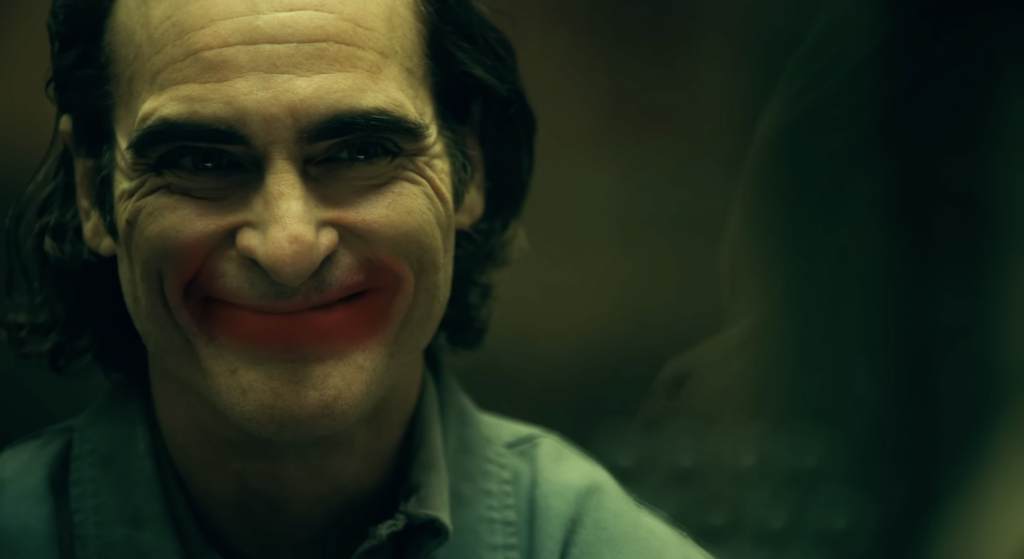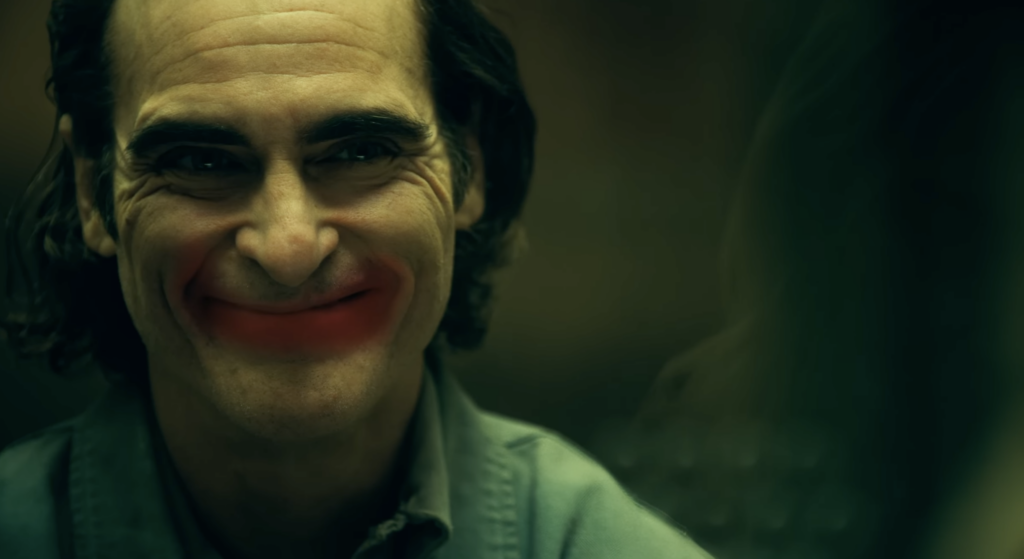Originally Authored at TheFederalist.com

Warning: spoilers ahead.
The unexpected billion-dollar success of Todd Phillips’ R-rated “Joker” (2019) on a modest $55 million budget makes the $300 million budgeted “Joker: Folie à Deux’s” 37-million-dollar opening weekend feel like a flop. Over two weeks the sequel grossed $167 million worldwide tragically failing expectations, jeopardizing profitability and threatening the hope of breaking even, leaving Phillips chasing films like Kevin Costner’s “Horizon: An American Saga” and Eli Roth’s “Borderlands” to the bottom of the box office heap.
The movie finds Arthur Fleck (Joaquin Phoenix) awaiting trial for multiple counts of murder in Gotham’s Arkham Asylum for the criminally insane. One of the guards, Jackie Sullivan (Brendan Gleeson) gets him into a music program in the minimum-security wing. There, Fleck meets Harleen “Lee” Quinzel (Lady Gaga). The disturbed Fleck and psychotic Quinzel fall into a shared delusional disorder, “folie à deux,” revolving around the iconic persona of the Joker expressed largely through their mutual love for show tunes and popular music. This pushes “Joker: Folie à Deux” squarely into the musical genre.
Not everyone enjoys musicals, which is one reason this film has become divisive among ardent “Joker” fans. Phillips’ initial film struck a chord with its core audience, but Phillips’ goal in this film is more character study than fan service. From the opening Looney Tunes-style cartoon, it’s apparent that the film will subvert expectations. Later, during a fantasy sequence reminiscent of “The Sonny and Cher Show” variety TV series (1976–1977), Fleck, as the Joker, provides a meta-commentary on the desires of the target audience saying to his Harley Quinn, “I got the sneaking suspicion that we’re not giving the people what they want.”
Batman’s arch-rival supervillain first appeared in 1940, gaining a cult-like status among fans who embraced a shared affinity for the chaos and anarchy embodied by the Joker. When Phillips’ first “Joker” film was heading to theatres, concerns arose that it could spark real-world acts of violence, partly because Heath Ledger’s portrayal of the Joker in Christopher Nolan’s “The Dark Knight” (2008) was linked to the horrific shooting at a screening of the film in Aurora, Colorado. That incident saw 12 people murdered and over 70 others wounded. Fortunately, Phillips’ 2019 film didn’t lead to similar violence, and it’s unlikely this sequel will either. The reason? Phillips is not giving such obsessive fans what they want.
Instead, he’s giving them a tale of repentance — or, at least, that’s the Christian term for it. The film’s pivotal moment finds Fleck sincerely confessing before the jury, “It was all just a fantasy. There is no Joker. It’s just me. I killed six people. I wish I hadn’t. But I did.” This confession breaks the folie à deux between Fleck and Quinzel, who serves as a kind of surrogate for the real-world fans who idolize the Joker. As Quinzel walks out of the courtroom in disgust, the real-world fans she represents metaphorically walk out on Phillips and his portrayal of their beloved unhinged clown.
In the first film, Fleck is formed into The Joker by his narcissistic mother, Penny Fleck (Frances Conroy), and in this second film, it’s his narcissistic love interest, “Lee” Quinzel, who wants the Joker to prevail and Fleck to dissolve into nothingness.
Advancing beyond anything seen in previous iterations featuring the villain, these two films transform Phoenix’s portrayal from an origin story of the Joker to a denial of the character. Taken as a whole, these are not films about “sympathy for the devil,” but rather, about the “renunciation of the devil and all his works and all his ways.” In an unexpected twist, Phillips’ two films don’t lead to the shedding of Fleck, where only the Joker remains. Nor do they entirely embrace the Jungian concept of integrating the shadow self or the alchemical idea of coagulation. Instead, Phillips delivers a character study where the moral is about setting aside fantasy and taking personal responsibility, even for the worst of actions. Fans hoping for the origins of a Joker ready to go toe-to-toe with Batman will be disappointed.
It is refreshing to see something of a sympathetic portrayal of a villain who, in the end, refuses to play the victim of his past, instead accepting the reality of his crimes: potentially sympathetic for Christian viewers because this confession of sins is a prerequisite for forgiveness. Christian viewers are taught to be interested in all people, even villains — perhaps especially villains — reaching a state of repentance and forgiveness.
However, the film lacks any absolution for Fleck following his confession. Instead, Phillips offers a downbeat conclusion, where Fleck “gets what he [expletive] deserves,” dying at the hands of another inmate as the sad punch-line to a twisted joke. The glamour of evil quickly evaporates, Fleck doesn’t get the girl, doesn’t achieve fame — only infamy. Crime doesn’t pay, law and order wins, and the fanatics who idolize the Joker are called to reconsider their idolization of the character.
In retrospect, this conclusion shouldn’t be surprising. Many of the musical selections established in the first act of the film contain Christian themes of judgment. The song “Get Happy,” popularized by Judy Garland in the musical “Summer Stock” (1950), here sung by Quinzel to Fleck, includes the lyrics, “Shout hallelujah, Come on, get happy, Get ready for the Judgment Day.” Even “When The Saints Go Marchin’ In,” ironically sung by the prison guards and inmates as they march them to empty their bedpans, points to the final judgement. It also alludes to the hope of being counted among the redeemed in Christ who are graced to enter heaven on The Last Day. This all sets the stage for Fleck’s ultimate judgment, not just in the eyes of the ardent fans, but in the eyes of God. It also asks, will Fleck also receive forgiveness?
Of course, Phillips also bookends the tragic character of Fleck with Frank Sinatra’s “That’s Life,” which includes the futile lyric, “You’re riding high in April, shot down in May,” implying that there may, in fact, be no hope for Fleck. And Phillips’ ironic use of “That’s Entertainment!” from “The Band Wagon” (1953) at key moments in the film highlights the sad fact that all of Quinzel’s interactions with Fleck amount to nothing but self-serving lies designed for her entertainment — further indicting viewers who desire their iconic villain remain unchanged for the better.
The film offers another warning: Fleck’s shadow may not be merely his dark “shadow” self but something more sinister, even demonic. This becomes apparent when Fleck is stabbed to death, and his murderer is seen in the background carving the Joker’s smile into his own face. This act is punctuated by the continuation of the lyrics from “That’s Life”: “But I know I’m gonna change that tune, When I’m back on top, back on top in June.” In this context, the “I” may be interpreted as the Joker, rather than Fleck. Thus, while Fleck denies himself and the devil, the spirit of the Joker lives on to tempt others toward chaos, anarchy, and violence in the future — suggesting that this may have been the case with every iteration of the Joker.
When Fleck first sees Quinzel singing in the music program in Arkham’s minimum-security wing, she’s singing “Will the Circle Be Unbroken,” about facing death with a Christian faith. In the early stages of the film this poses the question: Will their shared delusion last, or will it be broken? In terms of their relationship, the circle is broken, and by the end of the film so too is the bond between Fleck and The Joker.
Though Phillips stops short of having Fleck receive forgiveness and embrace the Christian faith, the abundance of Christian-themed music throughout “Joker: Folie à Deux” provides a film haunted by that possibility. This film may never find an audience. It’s like “West Side Story” (1961) meets “The Shawshank Redemption” (1994); a sort of musical version of “Fight Club” (1999), where both Tyler Durden and Marla Singer lose and fail to get what they want from the narrator.
Unless viewers are fans of a gritty version of Tim Burton’s “Sweeney Todd: The Demon Barber of Fleet Street” (2007), this film will likely be too dark for most fans of musicals and too disappointing for those invested in the established fantasy of the iconic DC Joker character. However, it may intrigue viewers interested in digging deeper into the true nature of evil and the desperate need for redemption faced by all those oppressed and trapped in their sinful condition amidst an ever-broken world.
Ted Giese is lead pastor of Mount Olive Lutheran Church, Regina, Saskatchewan, Canada; an award-winning contributor to The Canadian Lutheran and movie reviewer for the “Issues, Etc.” radio program. Follow him on Twitter/X @RevTedGiese.
